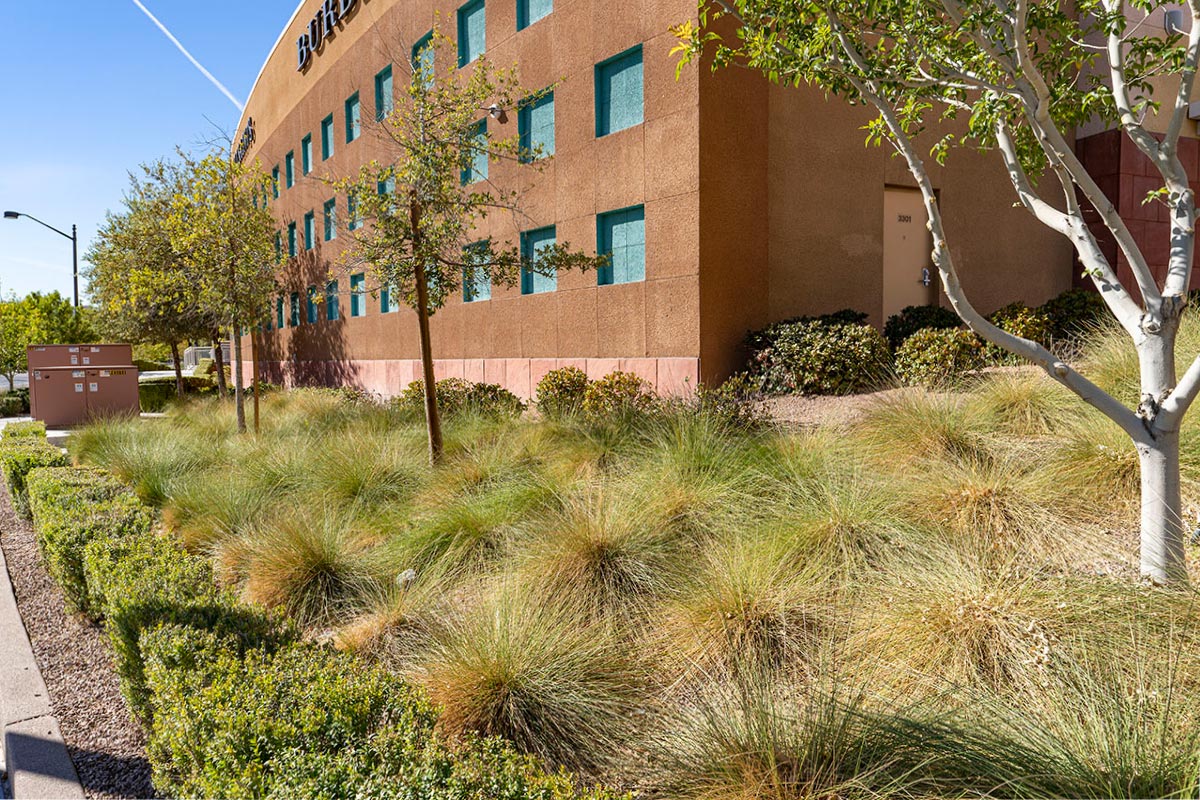

Grass is one of the largest users of water in Southern Nevada, sucking up 75 percent more water than a drip-irrigated landscape covering the same area. A new state law targets water-thirsty grass that is purely ornamental and does not serve a recreational purpose.
The turf removal law will help protect the valley’s water supply by prohibiting use of Colorado River water to irrigate decorative grass at all non-single-family properties by the end of 2026. The law impacts nonfunctional grass in streetscapes, medians, parking lots and other nonrecreational areas.
“No one chooses a dentist or shops at a store because there’s grass around the building or parking lot,” said J.C. Davis, the Enterprise conservation manager for the Southern Nevada Water Authority (SNWA). “This decorative grass is sucking up our drinking water and removing it will save billions of gallons of water every year.”
The law applies to purely ornamental grass that serves no recreational function. When the law takes effect on Jan, 1, 2027, it will be illegal for SNWA and its member agencies to deliver Colorado River water to irrigate nonfunctional turf at all non-single-family residential properties.
Southern Nevada’s limited water supply has been threatened by a historic drought on the Colorado River, the source of 90 percent of the community’s water. Lake Mead’s water level has dropped so low, the federal government declared a water shortage for 2022, reducing Southern Nevada’s water supply by 7 billion gallons. And, Davis said, hydrology reports project the river will be in shortage conditions for the foreseeable future.
Sixty percent of the valley’s drinking water is used outdoors, and much of that to irrigate landscapes. Replacing the millions of square feet of decorative grass targeted by the new law will help the community continue to manage its water demands, according to Davis.
“To keep a square foot of grass alive in our desert environment, it requires the equivalent of 10 feet of water. That’s the depth of a swimming pool,” Davis said, adding that a water-smart landscape requires less than 3 feet of water a year to keep it healthy. “Every time someone replaces a square foot of grass with a square foot of drip-irrigated trees and plants, they’re providing this community a 55-gallon barrel of water. That’s a big deal.”
Davis suggested Southern Nevada business owners and property managers contact SNWA to determine how their businesses may be impacted by the new law and to discuss water-saving incentives, such as SNWA’s Water Smart Landscapes (WSL) rebate. The WSL rebate offers a cash incentive of up to $3 per square foot of grass replaced with drip-irrigated plants and trees. (Some restrictions apply.)
“Our staff can meet with you and help you plan ahead. There are a lot of property owners applying for these incentive dollars, so we’re urging everyone to begin the process earlier rather than later,” Davis said. He noted that WSL rebate applications from homeowners associations and commercial properties have increased dramatically, which may drive up costs for plant materials and landscape installation services as the deadline to comply with the new law nears.
Find out how you can take advantage of SNWA’s landscape rebate and other cash incentives by contacting one of SNWA’s business experts at 702-862-3740 or email cashincentives@snwa.com. Learn more on snwa.com.
Members of the editorial and news staff of the Las Vegas Review-Journal were not involved in the creation of this content.
![]()


